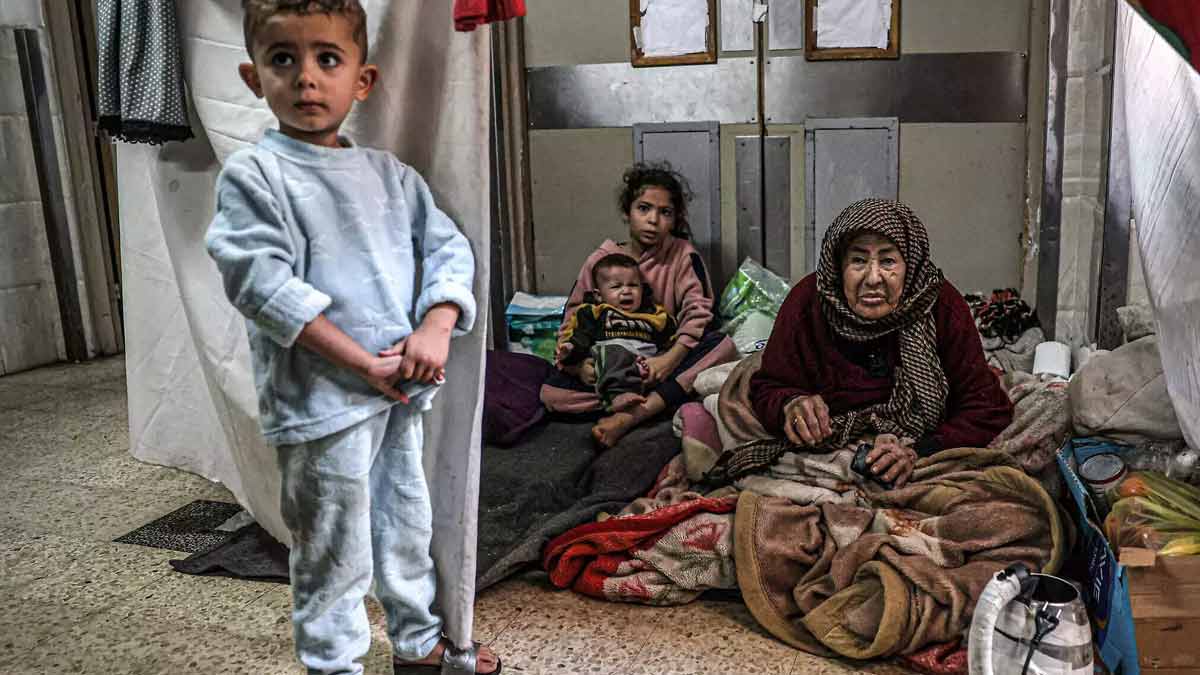
The ongoing conflict in Gaza has led to dire living conditions for many residents, especially children, who are increasingly suffering from various skin diseases. The World Health Organization (WHO) reports that over 150,000 people in the region have contracted skin diseases since the start of the Israel-Hamas war on October 7. Let’s explore the possible causes behind the spread of these skin diseases among children in Gaza.
Table of Content:-
What Might Be The Causes?
Unhygienic Living Conditions
One of the primary causes of the outbreak is the unhygienic living conditions in Gaza. Displaced families, like that of Wafaa Elwan, who now live in makeshift tents on sandy patches near the sea, face severe challenges in maintaining hygiene. Elwan's five-year-old son suffers from severe itching due to white and red blotches on his skin, a common issue among many children in the area. The lack of access to clean water and sanitary facilities has exacerbated the spread of skin infections such as scabies, chickenpox, lice, impetigo, and other rashes.

Contaminated Water Sources
The pollution of the Mediterranean Sea, traditionally a source of water for washing, has further complicated the situation. War has devastated basic facilities, leading to the accumulation of sewage and garbage in the sea. This pollution poses a significant risk of disease for those who resort to using the sea for bathing due to the scarcity of clean water. Parents are now unable to advise their children to wash in the sea, knowing it is contaminated with harmful waste.
Overcrowding and Poor Sanitation
The overcrowded and unsanitary conditions in refugee camps contribute significantly to the spread of skin diseases. Makeshift clinics, such as the one run by pharmacist Sami Hamid in Deir al-Balah, are overwhelmed with cases of children suffering from blisters, scabs, and rashes. Hamid reports that the hot weather and lack of clean water contribute to these conditions, leading to infections when children scratch their itchy skin. The absence of proper toilets, which drain into open channels among the tents, also facilitates the spread of epidemics.
Lack of Medical Supplies
The scarcity of medical supplies is another critical factor. In the makeshift clinics, there is a dire shortage of medicines to treat these skin conditions. Healthcare workers, like Hamid, often resort to using basic remedies such as calamine lotion to soothe itching. The situation is further aggravated by the inability to properly isolate and treat infected individuals, leading to rapid disease transmission.
Also Read: Pakistani Actor Sarwat Gilani Discusses Severe Postpartum Depression; Symptoms To Look Out For
Vulnerable Immune Systems
Children in Gaza are particularly vulnerable due to compromised immune systems caused by malnutrition. Mohammed Abu Mughaiseeb from Doctors Without Borders (MSF) highlights that children's natural behaviour—playing outside and touching various surfaces without washing—makes them more susceptible to infections. The hot weather and accumulated dirt contribute to rashes and allergies, which can become infected through scratching.
Preventive Measures and Future Risks
Preventing the spread of skin diseases in such conditions is challenging. However, certain measures can help reduce the risk:
- Improving Sanitation: Establishing proper sanitation facilities and ensuring access to clean water are crucial steps.
- Medical Interventions: Increasing the supply of medical treatments and improving healthcare access can help manage existing cases and prevent new ones.
- Public Health Education: Educating the community about hygiene practices and the importance of cleanliness can mitigate the spread of infections.
Healthcare workers are also concerned about the potential emergence of other serious conditions like leishmaniasis, which can be fatal in its most severe forms. The urgency of addressing the healthcare needs in Gaza is paramount to prevent further deterioration of public health.
Bottomline
In conclusion, the spread of skin diseases among children in Gaza is a multifaceted issue rooted in poor living conditions, inadequate sanitation, contaminated water sources, lack of medical supplies, and vulnerable immune systems. Addressing these underlying causes is essential to improve the health and well-being of the affected population.
Also watch this video
How we keep this article up to date:
We work with experts and keep a close eye on the latest in health and wellness. Whenever there is a new research or helpful information, we update our articles with accurate and useful advice.
Current Version